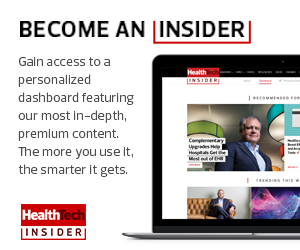Clinical Decision-Making Is Being Transformed with AI
Staying ahead of sudden deterioration and chronic illnesses is a goal shared by many providers. AI enables healthcare organizations to do just that by serving as a backbone for technologies such as predictive analytics and clinical decision support systems.
Such systems aid clinicians in sifting through and making sense of the vast amount of health data collected by modern medical devices. They alert providers of any potential problems with patients and even go as far as suggesting next steps for treatment.
This predictive approach can be used to detect early warning signs for conditions such as sepsis, which, if left untreated, can quickly lead to organ failure and septic shock. To identify patients in early stages of the condition, the Duke Institute for Health Innovation developed an AI system called Sepsis Watch. The system assigns patients risk scores, which relay to care providers a real-time evaluation of the patient’s condition
Trained via deep learning, Sepsis Watch analyzes over 32 million data points to create a patient’s score. If the findings call for action, the system not only alerts the hospital’s rapid response team but also guides them through the first three hours of care administration.
Using AI for risk scoring and clinical decision support offers significant potential to improve healthcare outcomes, especially as this approach to data analytics continues to evolve.
READ MORE: Learn how healthcare organizations use AI to boost and simplify security.
MRI Scan Time, Cost Reduced by Machine Learning
Magnetic resonance imaging scans are considered to be one of the most expensive individual procedures a hospital can run. The average scan, according to Bankrate, can cost a patient anywhere between $400 to $3,500.
Mert Sabuncu, an assistant professor in the School of Electrical and Computer Engineering at Cornell University, tells Health Data Management, however, that MRI scan costs are primarily driven by the length of time it takes to run the scan — and he believes that by introducing a machine learning method that time can be reduced, which will in turn lessen costs and enhance patient satisfaction.
The method, known as Learning-based Optimization of the Under-sampling PattErn (LOUPE), works by training a convolutional neural network on a set of full-resolution MRI scans. The scans are then undersampled after the fact and fed back into an anti-aliasing model to create a reconstruction. After comparing the optimized undersampling pattern with standard schemes, Sabuncu notes that he and his team witnessed more accurate reconstructions from the optimized pattern.
While this type of work is relatively new in healthcare, the ability for machine learning and AI to influence healthcare delivery and costs should not go unrealized. This technology is only continuing to grow, and it will be exciting to see what problems it can help to solve next.










